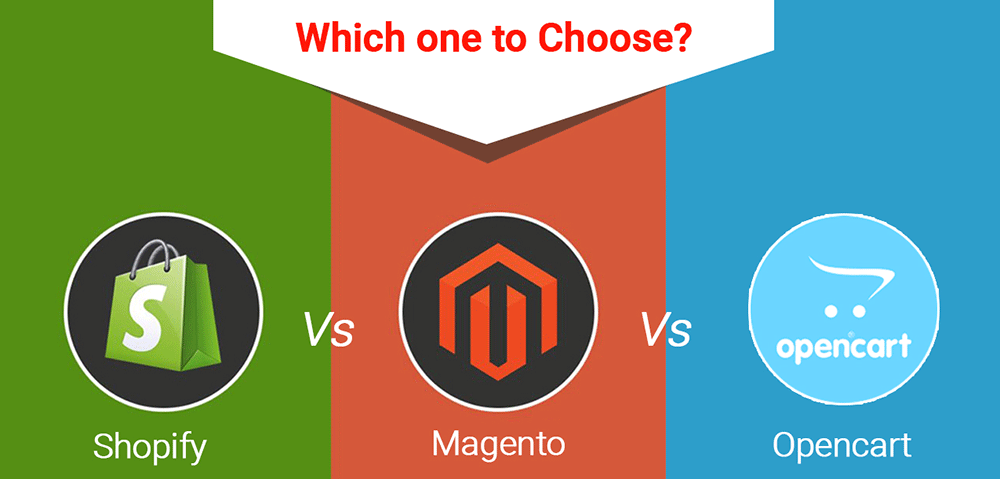“I want to start my online clothing retail business. Should I use Magento, Opencart, PrestaShop, or Shopify?” Through FashionTIY’s comparison of the Pros and Cons of these 4 different systems, we hope to help you make a choice that suits your actual clothing retail situation!
Whether your business is in online clothing retail platforms, such as Amazon, AliExpress, eBay, or the Boss of a traditional clothing factory, I believe many clothing retailers will have this question: “I want to start my online clothing retail business. Should I use Magento, Opencart, PrestaShop, or Shopify?”
Yes, this is a very practical question. Which system should clothing retailers use to make their own online clothing retail store?
Before deciding which system to use, let’s compare the Pros and Cons of Magento, Opencart, PrestaShop, and Shopify.
Magento
Pros:
Magento function is the most powerful open source mall system in all these systems. The expansion and marketing functions are excellent. You can add your own suitable functions in the later period. Therefore, it is particularly suitable for large-scale e-commerce platforms with rich products and relatively large traffic.
Cons:
Regardless of the installation or use that Magento is the most complicated in all systems. Magento is very scalable, thus consumes a lot of performance. In addition, there are many operational problems in the backend, which only can be solved by programmers with certain professional knowledge. Therefore it needs to spend more time and is more difficult than other systems.

Opencart
Pros:
The version of Opencart is updated very quickly. According to the traffic statistics of the Alexa website, Opencart has become the global mainstream e-commerce website building system. The reason why Opencart is rapidly popularized is mainly because of its powerful functions and excellent design. The design of the interface is very consistent with the browsing habits of the public: simple, intuitive, and beautiful. The backend is also very simple, clear, and powerful. In the official plugin market of Opencart, you can purchase plugins that meet various functional requirements, such as various payment, logistics, and express delivery modules. It is very easy for beginners, and for most experienced online clothing retailers, OpenCart’s back-end management functions can basically meet their needs.
Cons:
Opencart’s plugins are installed in an overlay format. At present, the version compatibility of the plug-in is not perfect enough, and the later expansion is relatively poor.
PrestaShop
Pros:
PrestaShop is super easy to use. After logging in, you will see various functions. PrestaShop caters to retailers who want to sell in the online clothing market internationally. You can add different languages, currencies, and choose international shipping and taxes. Provide setup guides, technical assistance, and even business development skills. And PrestaShop’s market contains 10,000 free and paid themes, modules, and services.
Cons:
Although PrestaShop has a lot of functions, its template design lacks professionalism and its later expansion is relatively poor.

Shopify
Pros:
Since the development of Shopify, it has not only provided professional e-commerce website construction services but also carried out e-commerce based on social networks. That is, clothing retailers can open online clothing stores on several mainstream social network platforms such as Facebook, Pinterest, and Twitter through Shopify. It also provides useful tools to help retailers successfully conduct clothing retail and wholesale business. For example, Shopify App can help you from these aspects: product release, product inventory management, email marketing, SNS marketing, advanced analysis reports, SEO, order management, etc. Shopify App Store has more than 1000 different applications for you to choose from, these apps a large part can help you provide efficiency and automation.
Cons:
You cannot install it yourself and only choose the template. The cost is high and unreasonable, it is very inconvenient for the personalized display and expansion of the website in the future.
On the whole, Magento is a recommended option for larger online clothing retailers. But for small and medium-sized online clothing retailers, choose Shopify is better! Read this article to learn more about Shopify.FashionTIY TIPS: Use Shopify To Open An Online Clothing Retail Store? You Need To Know These! Keep it simple in the early stage, don’t think about many things, invest your most important time in the most valuable things.
Hopefully, the comparison of Magento, Opencart, PrestaShop, and Shopify will help you solve your online clothing retail problem.
FashionTIY is not only an online wholesale market but also a retail expert around you. For more information about retail and wholesale, please feel free to visit www.fashiontiy.com